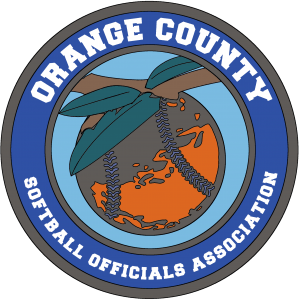With the changes this year, I sent the video to NFHS for their interpretation. Below is their reply to the video. Their interpretation leads to Philosophical Thoughts 2. There are times we might not agree with the direction NFHS wants the play(s) called but it is our responsibility to follow their direction. There were a number of umpires would disagree with their interpretation. No matter which side of the fence you are on, this is how it should be called moving forward. As a side note, from my viewing of the video, I believe there are a couple times where she actually stepping in front of the pitching plate and those pitches should be called.
We have a few considerations/allowances for pitchers to enable them to pitch within the spirit and intent of the written rules. This pitcher appears to be taking advantage of most of those in their pitching style. A few of those considerations:
- It is legal to slide the foot on the pitching plate as long as they are in contact with the pitcher’s plate until they push off from the pitcher’s plate. This is next to impossible especially with metal cleats which will dig into the soft material of the pitcher’s plate. A consideration to accommodate this is allowing a player to raise their foot to “clear their cleats” and be able to slide their foot sideways or move their foot forward or backward on the pitching plate as long as the foot remains above the pitching plate.
- It is a requirement that the pitcher must push off from the pitcher’s plate when starting their pitch and moving forward away from the pitcher’s plate, they cannot push off from a place other than the pitcher’s plate moving the non-pivot foot closer to home plate. They also must maintain contact with the pitcher’s plate from the time they take the signal until this push forward. A consideration to part of the rule is to allow a pitcher that starts with the majority of their foot in front of the plate to curl their foot while they push from the pitcher’s plate. This curling action raises the back of their foot and most times results in the heel of the pivot foot being up off the pitcher’s plate but still over the plate. Although technically they are pushing from the ball of their foot which is a couple of inches in front of the pitcher’s plate It has been allowable for this action to take place as long as the foot doesn’t move forward enough to result in the heel no longer being over the pitcher’s plate. Since we have allowed this action on the front of the plate and considered it still in contact with the plate, it seems fair that we should allow the same consideration on the back of the pitcher’s plate with the toe being above but still over the pitcher’s plate considered in contact with.
Examining this pitcher it appears that they raise the front of their foot off the pitching plate but in most of the pitchers it is still over the pitching plate. Although the consideration mentioned above is normally utilized with the heel of the foot on the front of the plate, the same consideration should apply to the front of the foot on the back of the plate also. The pitcher does raise their foot slightly when they slide the foot forward but again this appears to be in line with the allowance to “clear the cleats” when moving on the pitcher’s plate. Looking at this in slow motion it does appear that on a few pitches the pitcher does slide the pivot foot too far forward breaking contact (no longer over but now in front of) and being in front of the pitcher’s plate, this would be illegal. The rest of these actions appear to fall within the considerations mentioned above. Another consideration for this discussion is the angle of the video, it appears it is shot from in front of first base. In a real game situation with the umpire in their normal starting positions 18-21′ behind first base it is very unlikely that this action could be seen well enough to judge all the aspects we are currently discussing in this email. The view from an umpire’s angle behind the baseline would render them looking more at the back of the pitcher’s foot and they would most likely not be able to see all these aspects clearly. As mentioned these actions, although unorthodox, appear to fall within the accommodations/considerations we have used for years. With that being said I do believe it is within the authority of the umpire in this game to discuss this with the pitcher’s coach and work through them to “clean” these borderline actions up and make this a less controversial pitching style. Advising that moving the foot slightly so that the heel remains in contact with the back of the pitching plate and ensuring that the slide forward does not extend too far forward breaking the plane of the front of the plate. If the pivot foot does slide too far forward it would be illegal and should be called….but from the umpires angle and view during the game it is unlikely that they would be able to be confident enough that the foot is indeed sliding too far forward as it is difficult to see even in slow motion from the given camera angle let alone from 18-21′ behind first base.
Have an Account?
Login
